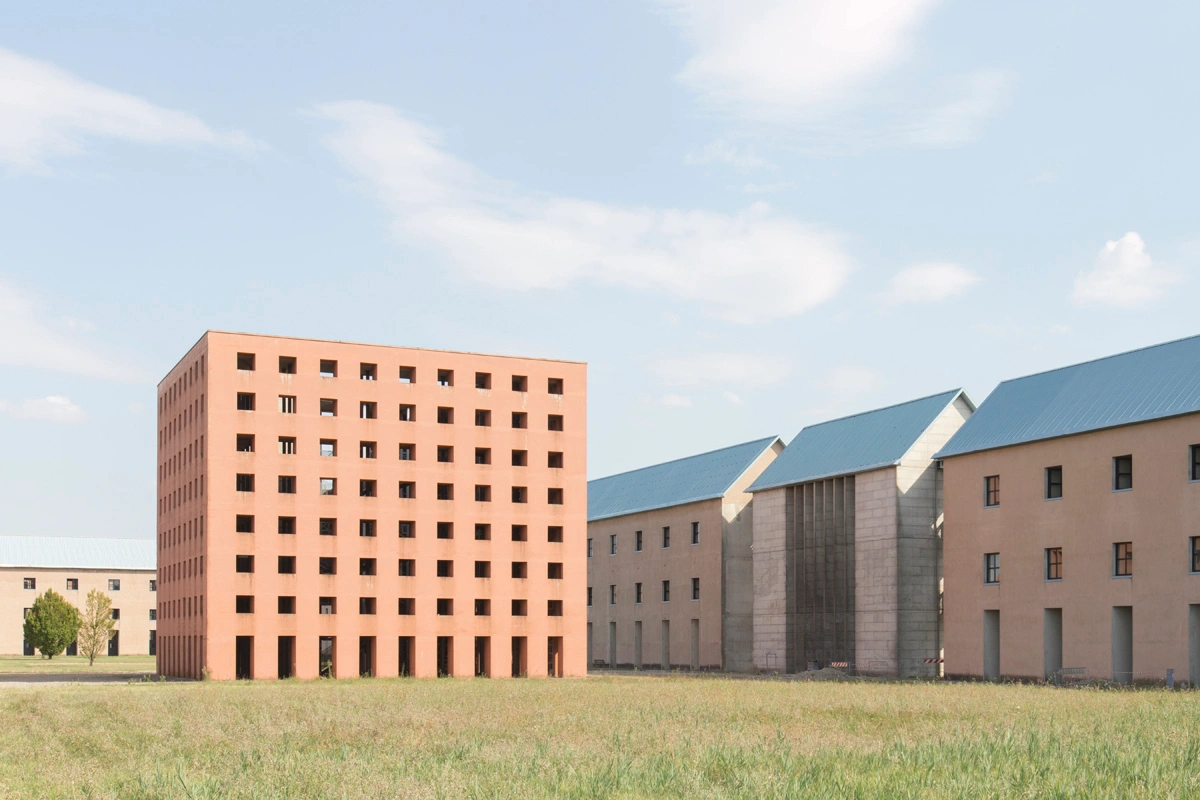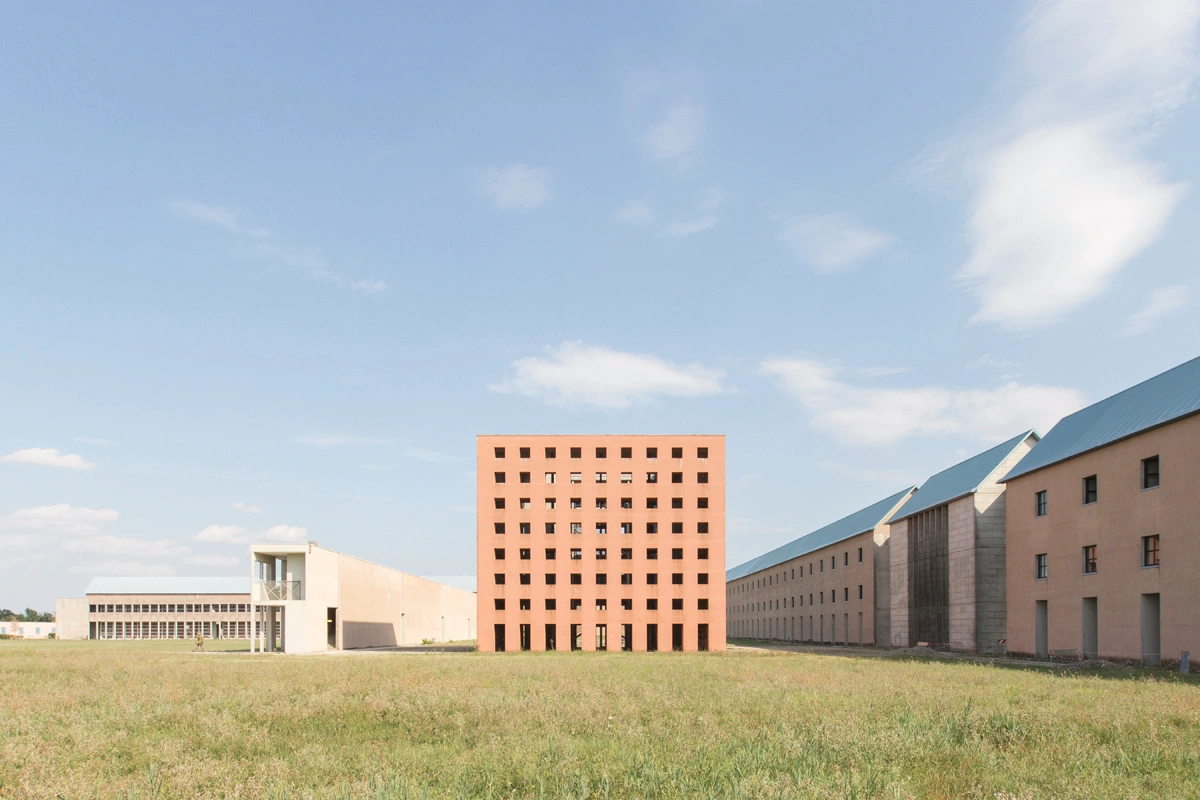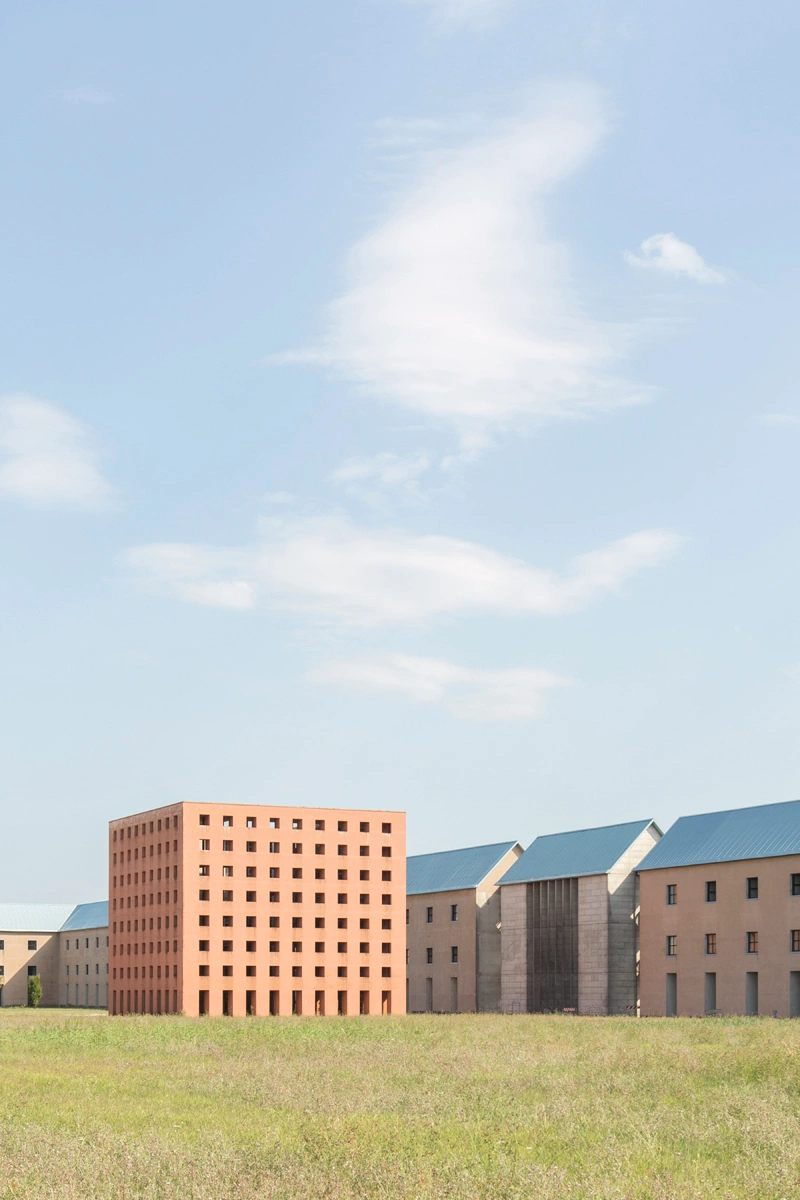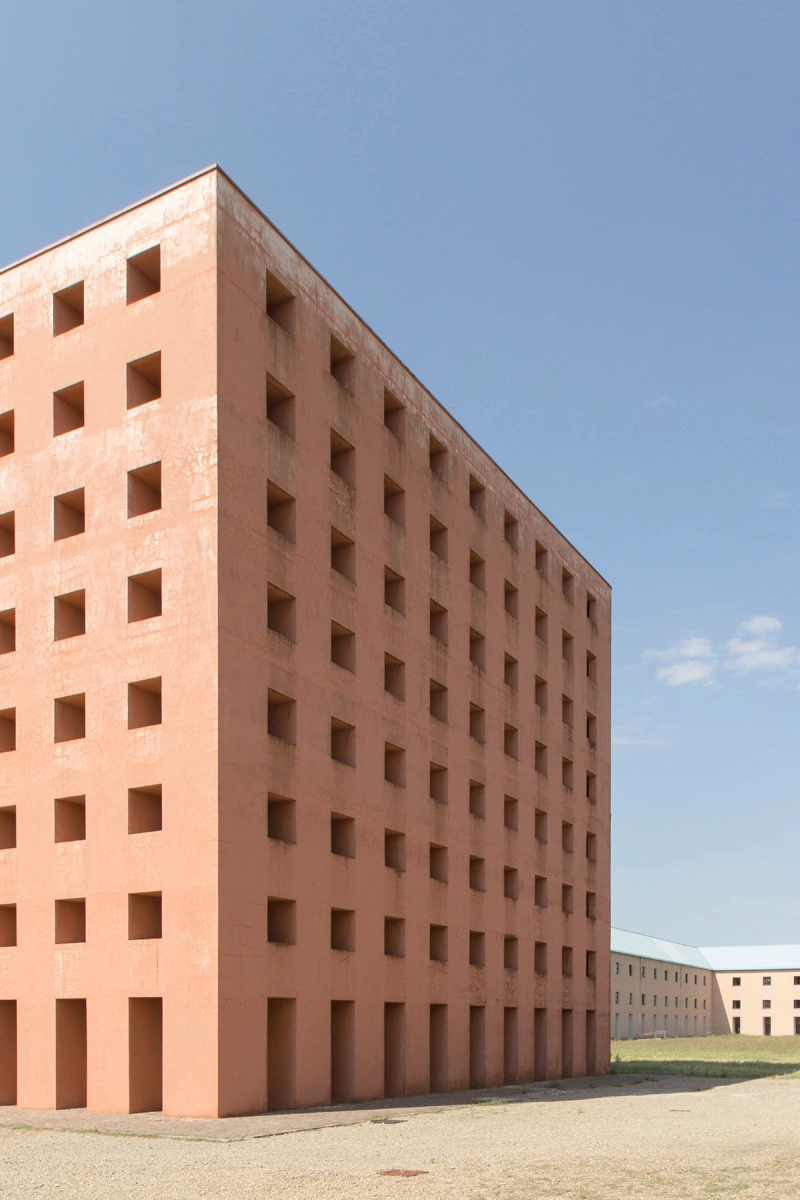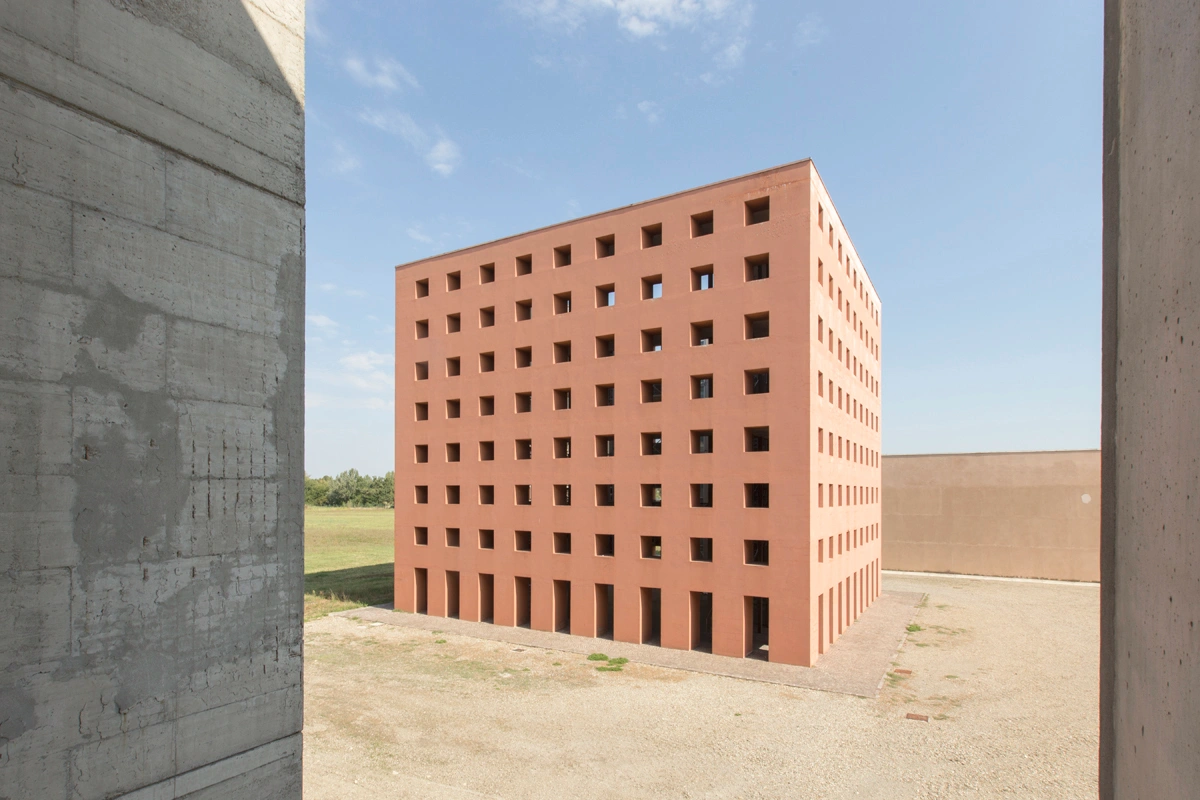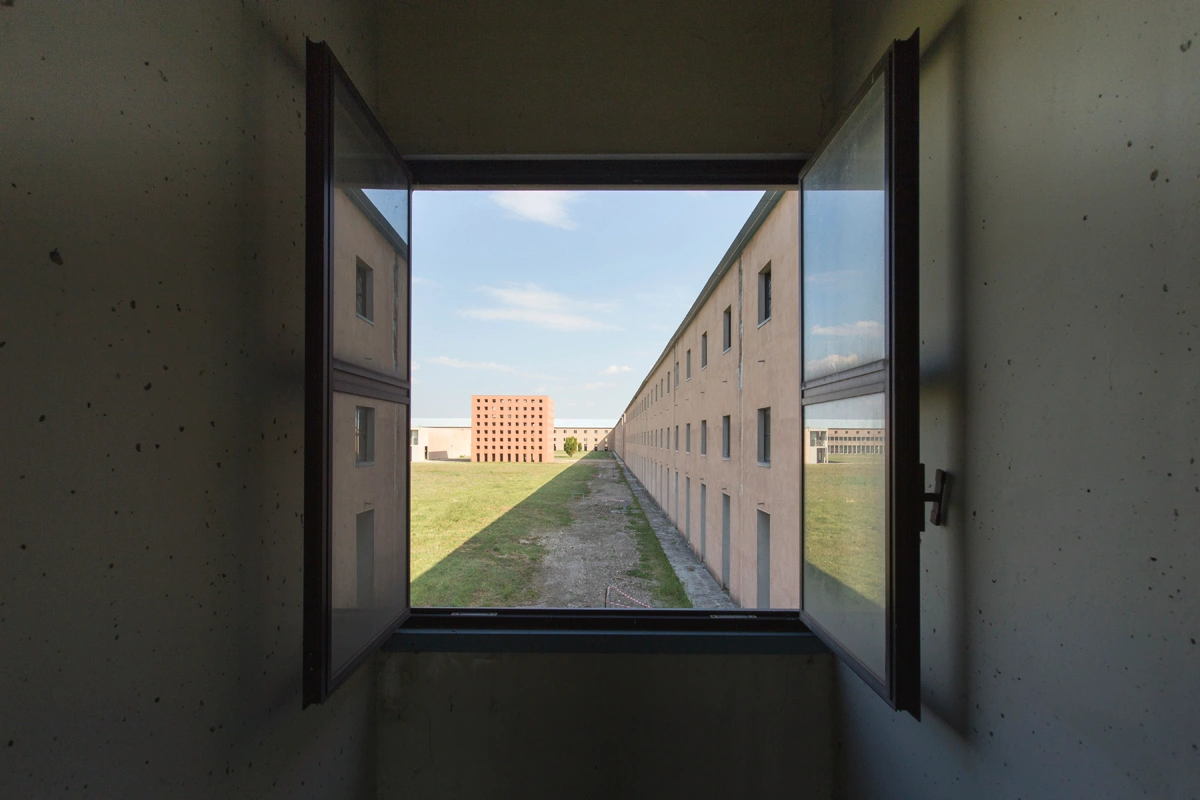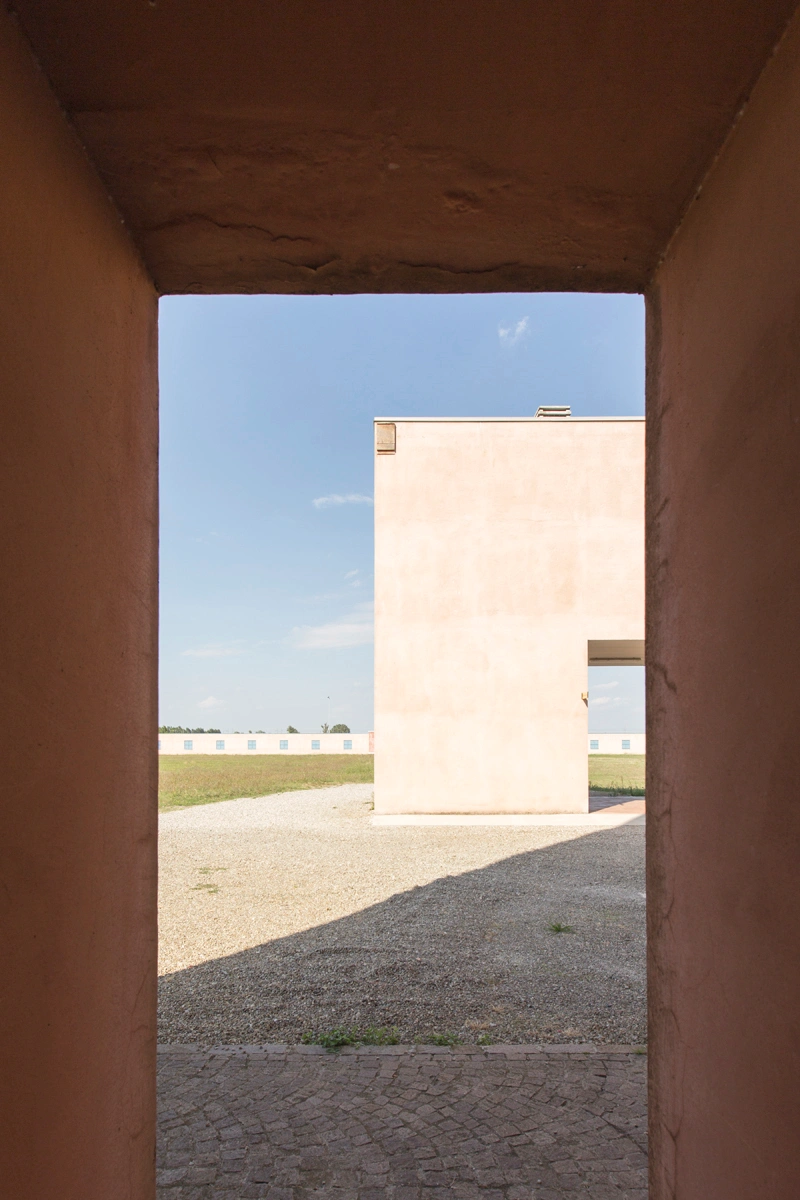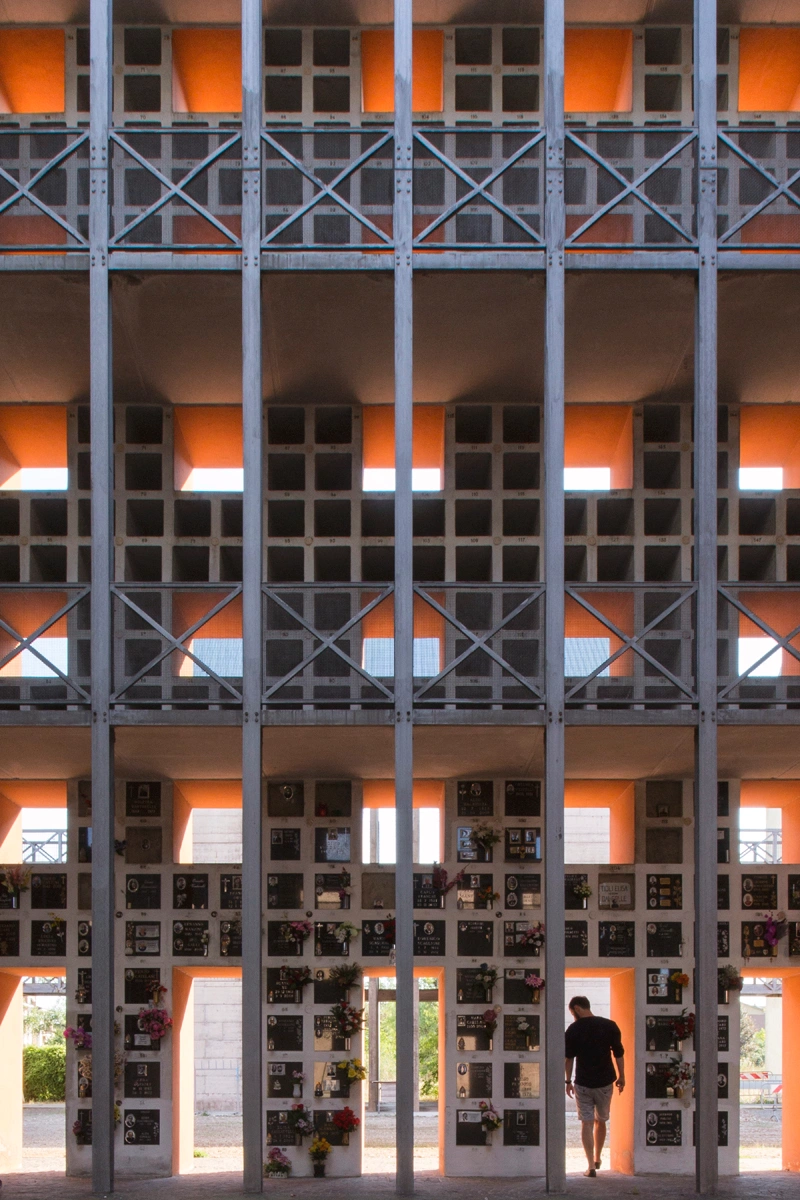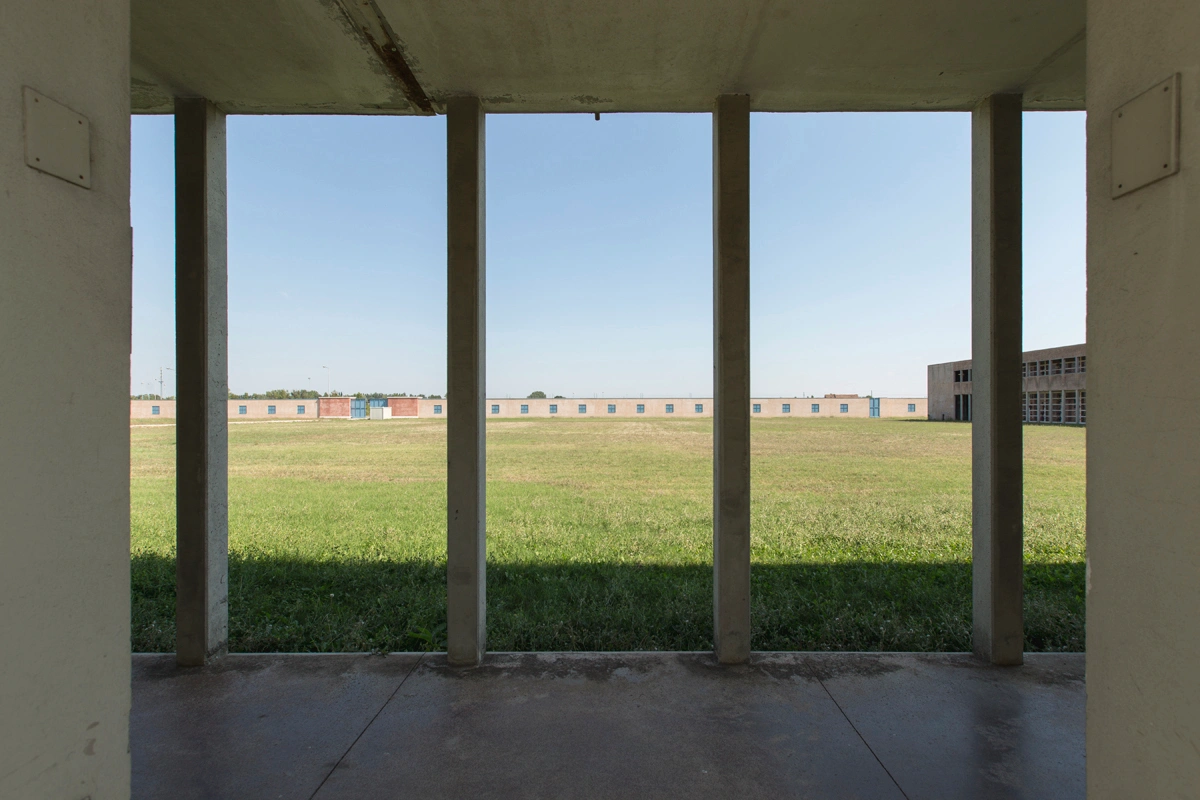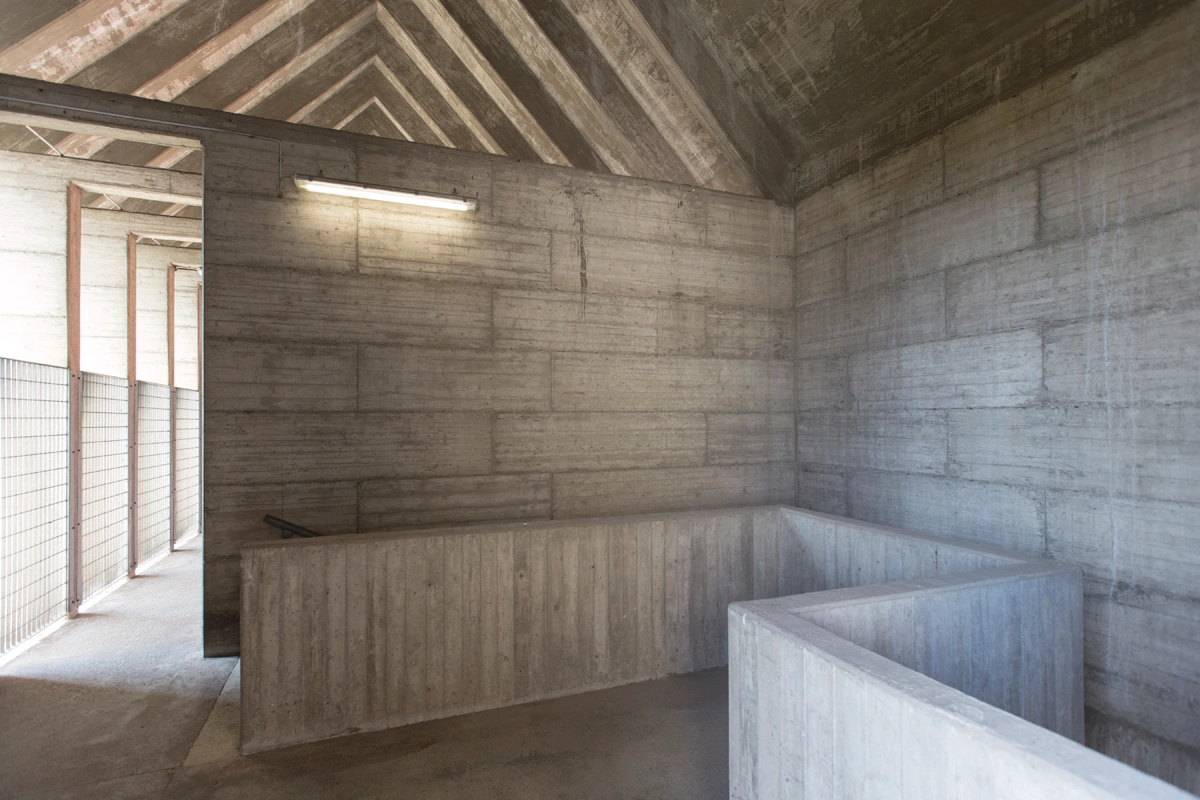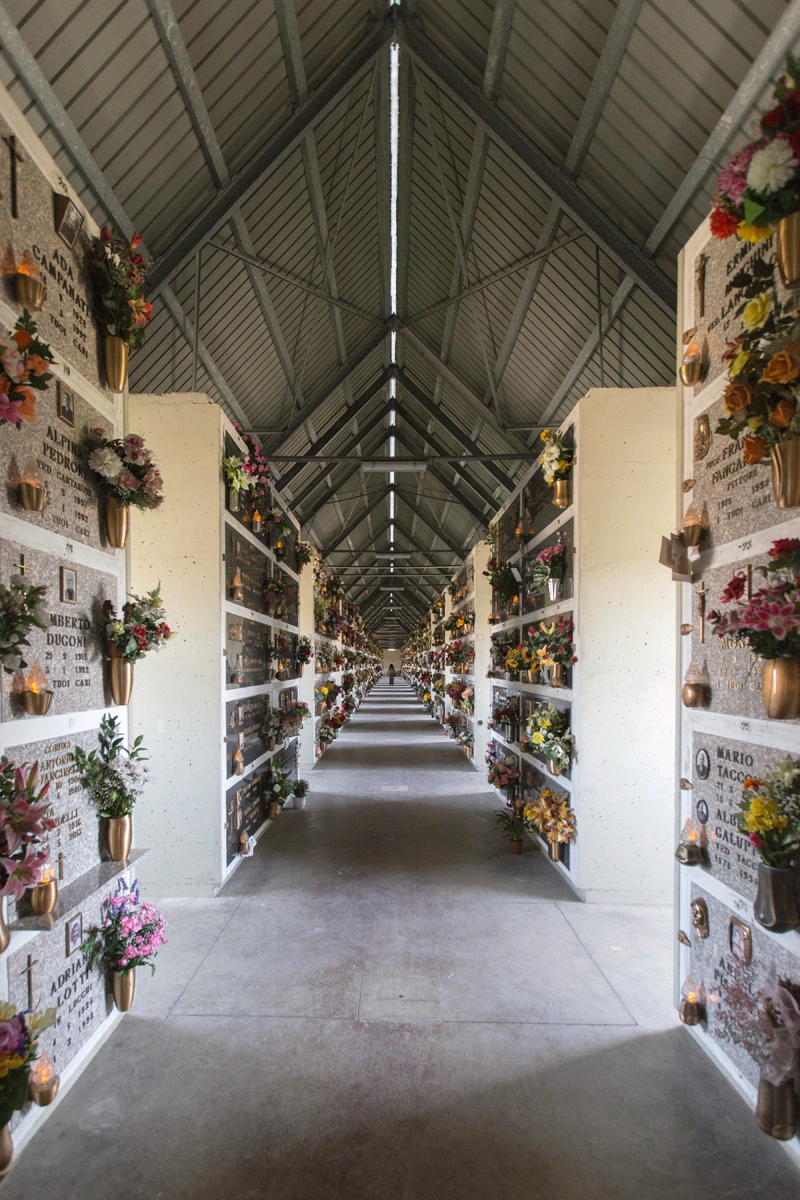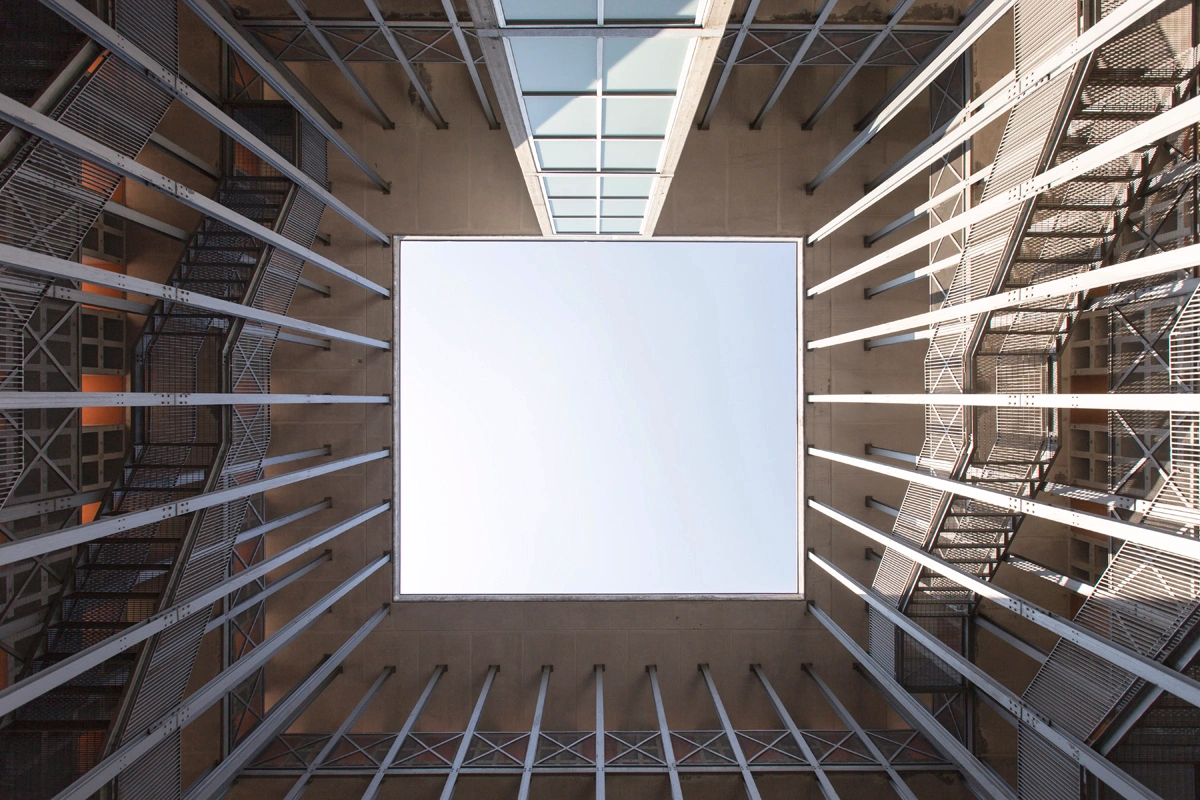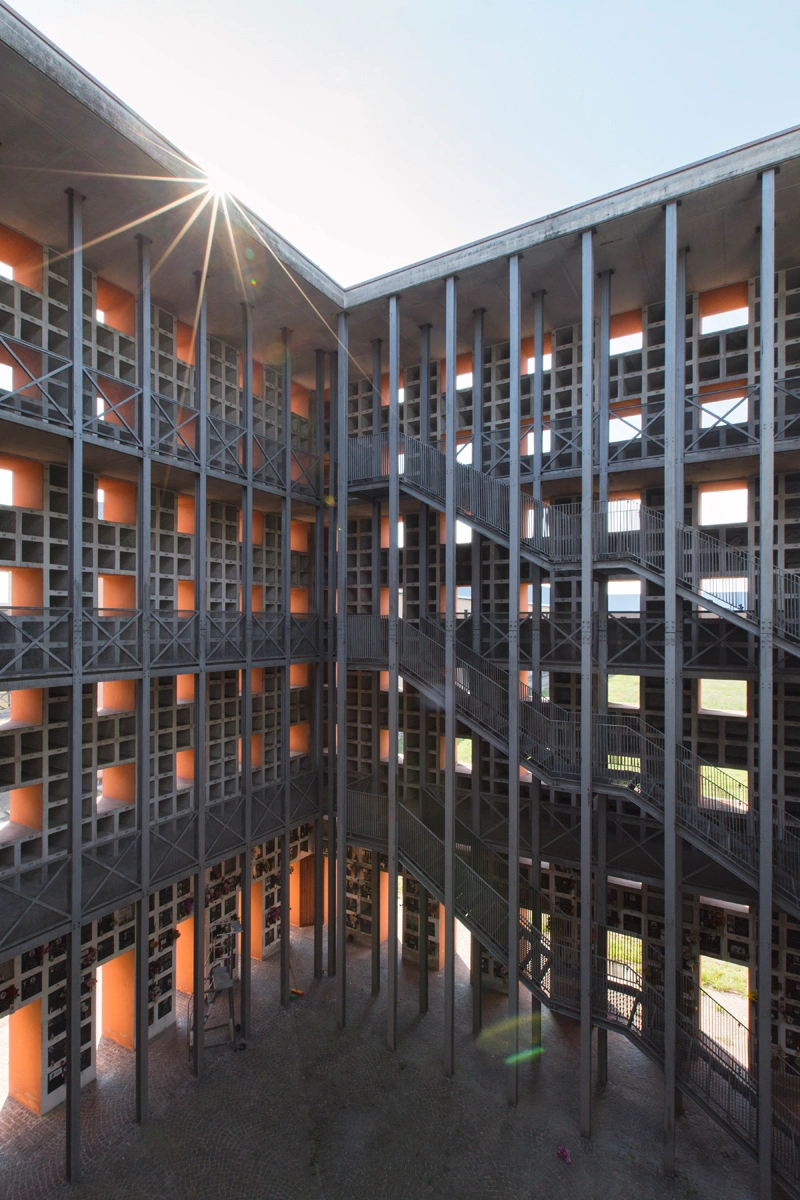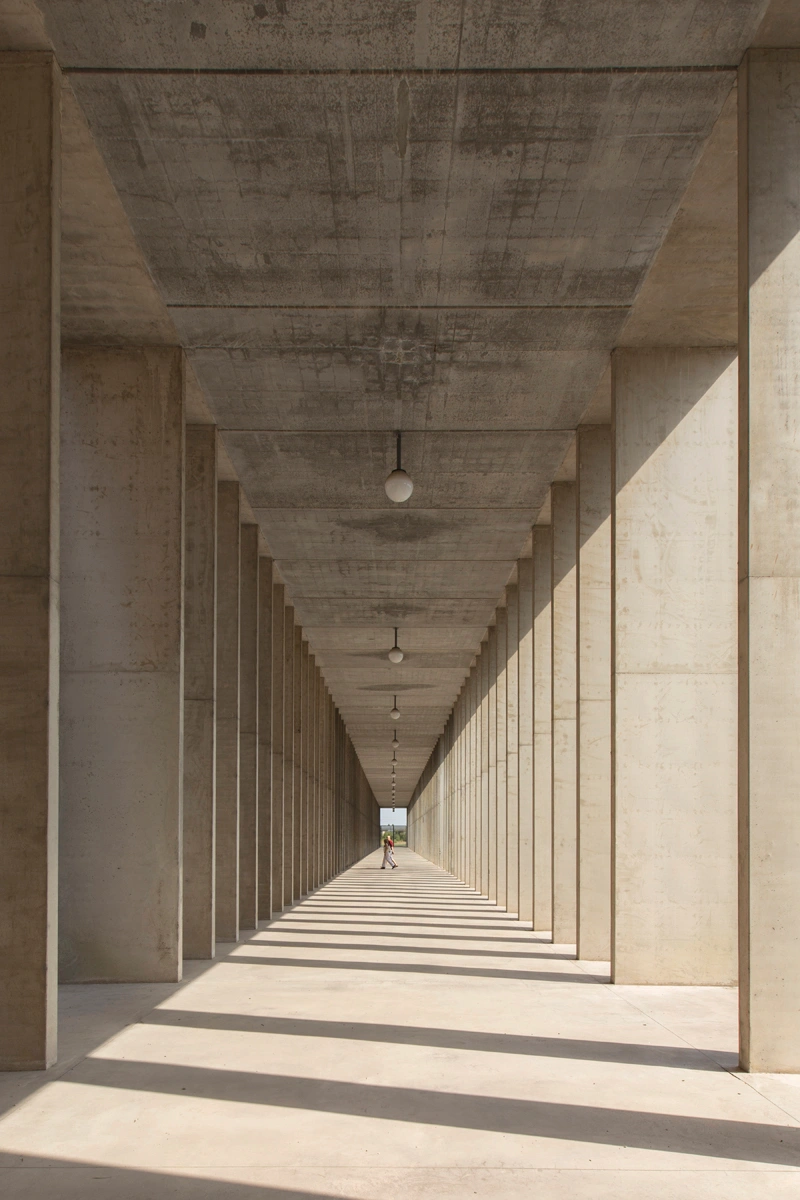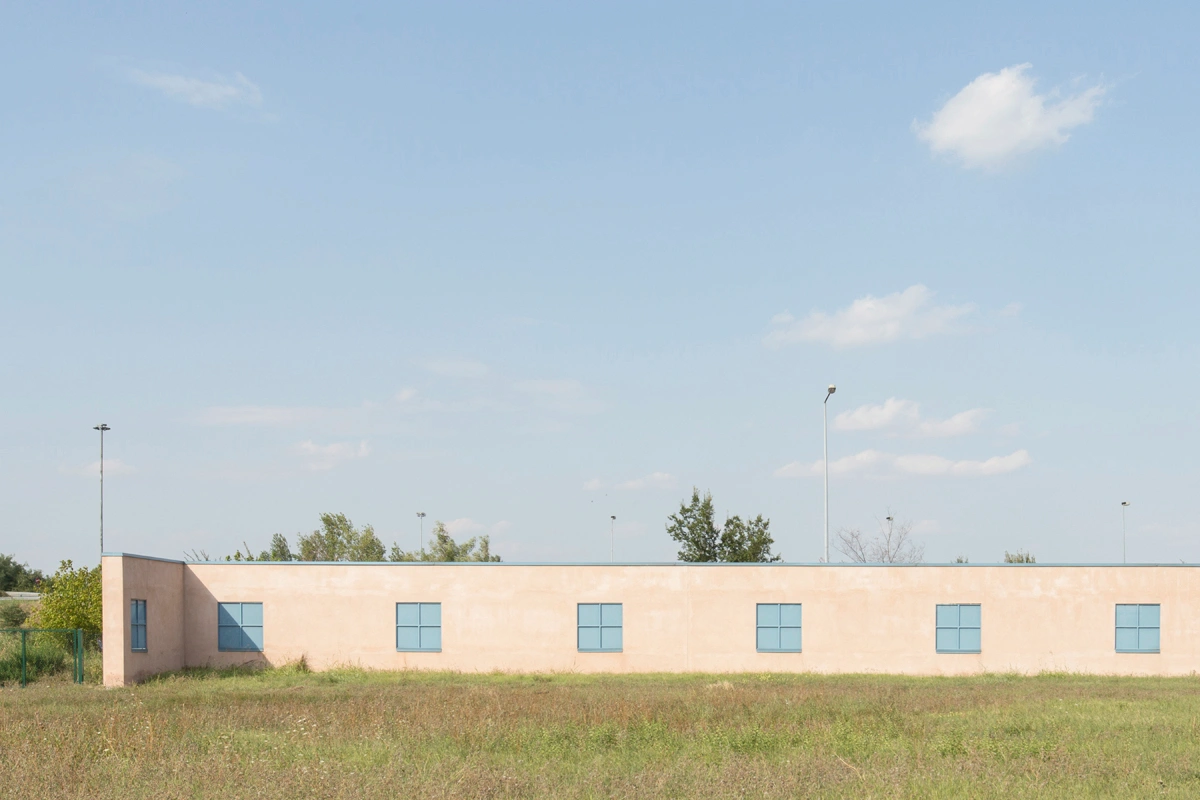Aldo Rossi's San Cataldo Cemetery in Modena, Italy is a provocative and fragmented architectural meditation on memory and mortality, blending historic symbolism with deeply personal narratives.
Conceived in 1971, it reflects Rossi's contemplations on typology, memory, and architecture as a metaphysical encounter. This incomplete yet profoundly influential project is not merely a resting place for the dead but a complex dialogue with architectural history, personal trauma, and cultural symbolism.
Drawing from Cesare Costa's earlier 19th-century cemetery and Jewish burial traditions, Rossi designed San Cataldo as a series of fragments, an assemblage inspired by his personal experience of bodily fractures following a severe car accident. The cemetery materializes Rossi's theory of architecture as a system composed of ruins—pieces put back together to form a profound, though intentionally incomplete, unity. It eschews completeness, favoring openness and partiality as philosophical statements.
Dominating the composition is the terracotta-colored ossuary cube—its stark geometry pierced by deliberate voids, referencing both containment and openness. The cube resonates deeply with Rossi's concept of architecture as inherently metaphysical; visitors inevitably confront their own mortality, standing before a building stripped of ornamentation and traditional comforts. Adjacent to this cube, the conical communal grave structure further emphasizes the solemn purpose of the design.
The project's spatial arrangement relies heavily on axial composition and symbolic geometry. Rossi deliberately echoes Costa's perimeter walls, establishing a dialogue through spatial referencing, with intersecting paths and a rhythmic alignment of structures that metaphorically evoke a ribcage. This organization extends to buildings devoid of roofs, doors, and floors—mere shells articulating views and framing existential perspectives.
Despite being unfinished, San Cataldo Cemetery is a landmark in postmodern architecture, though Rossi himself famously rejected this categorization. He sought instead to ground his architecture in timeless ideas, transcending contemporary labels. Today, the partially completed cemetery continues to evoke strong reactions, embodying a profound architectural meditation on death, memory, and the enduring power of fragmented forms.

